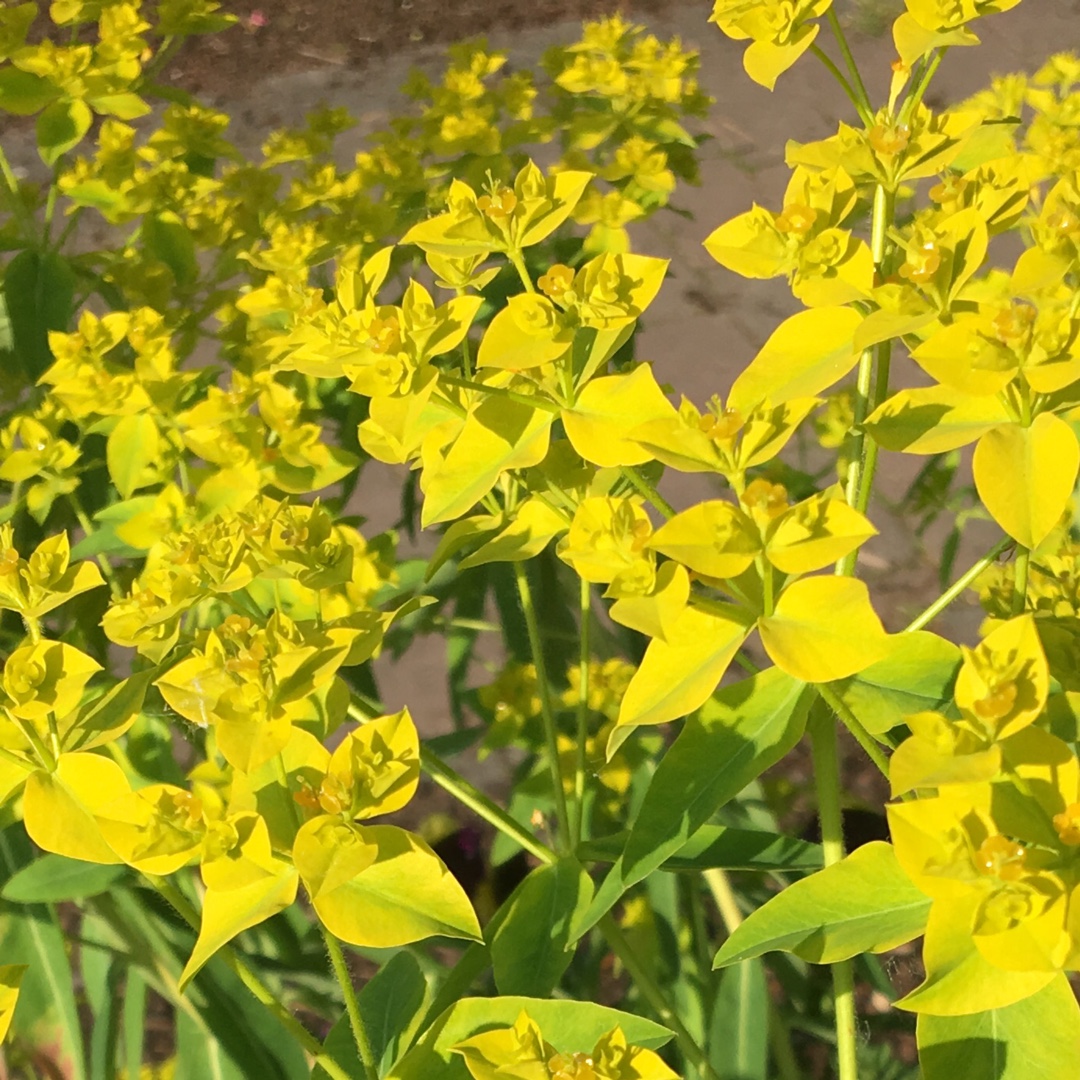
Euphorbia ceratocarpa
Horned Spurge
Euphorbia ceratocarpa is an tall evergreen perennial or subshrub that originates from Italy and Scilly. It has long narrow leaves with a prominent midrib, and produces clusters of vivid green and yellow bracts and flowers on the end of stems in mid to late summer. It is a tall species, growing up to 1.7 metres. It is hardy down to -10 °C (14 °F), and has the ability to withstand drought and dry conditions. Ideal for sunny border, as it requires full sun. Like other Euphorbias, this produces a white sap from any broken stem or leaf, which is toxic and can cause irritation to the skin. It prefers a light free draining soil. It doesn't require much fertile soil and does well in poor soils. It does spread via underground stems and if left unchecked it can become invasive.
Contributed by @joshew24
-
Full sun
-
Very little water
-
Full Frost Hardy: 5F (-15°C)
-
Free draining
Common name
Horned Spurge
Latin name
Euphorbia ceratocarpa
type
Evergreens
family
Euphorbiaceae
ph
5.0 - 7.5 Acid - Neutral
Plant & bloom calendar
-
Best time to plant
full grown dimensions
 1.70 M
1.70 M
1.70 M
1.70 M
Euphorbia ceratocarpa
Euphorbia ceratocarpa is an tall evergreen perennial or subshrub that originates from Italy and Scilly. It has long narrow leaves with a prominent midrib, and produces clusters of vivid green and yellow bracts and flowers on the end of stems in mid to late summer. It is a tall species, growing up to 1.7 metres. It is hardy down to -10 °C (14 °F), and has the ability to withstand drought and dry conditions. Ideal for sunny border, as it requires full sun. Like other Euphorbias, this produces a white sap from any broken stem or leaf, which is toxic and can cause irritation to the skin. It prefers a light free draining soil. It doesn't require much fertile soil and does well in poor soils. It does spread via underground stems and if left unchecked it can become invasive.
Planting young plants
From Early Spring TO Early Spring
As a general rule, Spurge requires well-drained soil in full sun. They will tolerate shadier conditions, but none of the family is fussy about soil condition. They even thrive in very poor soils and can tolerate periods of drought.
Propagation
From Early Spring TO Early Spring
Spurge grows quite well from seeds sown indoors in pots. You can propagate Euphorbia more quickly and easily by gathering up the “volunteers” around an established plant. You may also root basal stem cuttings in a soil less medium, such as peat. Keep them lightly misted and enclose the pot in a bag to keep moisture in. Let the pot breathe once a day for an hour, so the soil does not mold. Once the cutting has rooted, you can pot it in regular soil or plant outdoors in moderate climates. One of the more important growing tips for Euphorbia is to let the stem cutting dry for a few days before planting. This allows the sap to form a callus on the cut end and prevents rotting.








